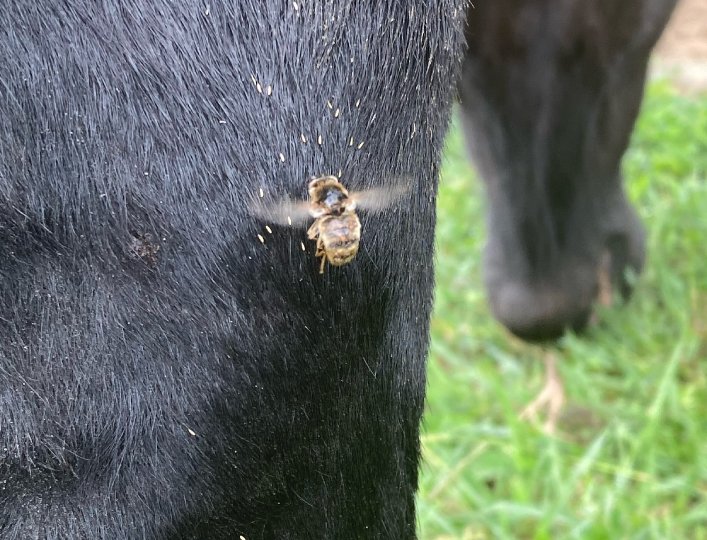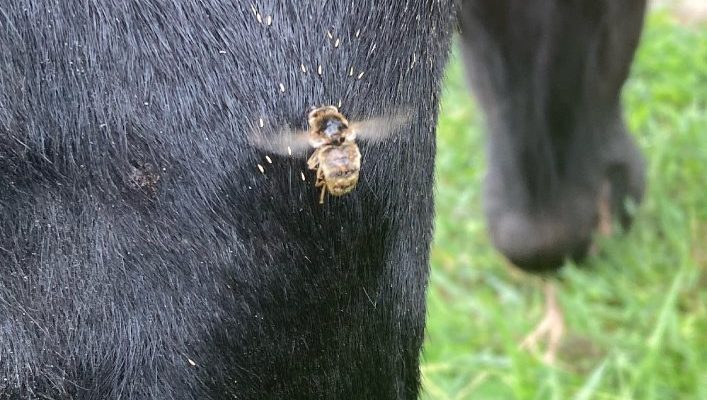
Botflies have a unique and somewhat creepy method of laying their eggs. Instead of finding a cozy spot like most other insects, they target **animal burrows** to deposit their eggs. If you’re thinking that sounds a bit odd, you’re not alone! But understanding this behavior helps us appreciate the intricate web of life in the animal kingdom and the relationships between species, even the not-so-cuddly ones.
In this article, we’ll dive into the world of botflies, exploring how they choose their laying sites and the fascinating journey their eggs undergo. You might be wondering, “Why should I care about botflies?” Well, knowing about them can help you understand the delicate balance of ecosystems and the role every creature plays, even the ones that send shivers down your spine.
What Are Botflies?
**Botflies** are a group of flies belonging to the family Oestridae. They’re known for their parasitic lifestyle, which sets them apart from most other insects. While some flies buzz around happily, botflies take a more insidious approach. Their larvae live inside the tissues of mammals, and it all starts with how they lay their eggs.
These flies are usually gray or brown, with a fuzzy appearance that might remind you of a small bumblebee. They don’t feed like other flies; instead, they focus on finding hosts—often larger mammals like rabbits, rodents, and even pets. This brings us to their rather unique method of egg deposition.
How Do Botflies Find Animal Burrows?
Botflies have an incredible sense of smell, which they use to locate their favorite burrowing animals. When scouting for potential egg-laying sites, they can detect the scent of a host animal from a surprising distance. By following these scents, they can hone in on burrows that might be home to their desired host.
**Here’s the thing**: it’s not just about finding any burrow. They’re looking specifically for burrows that belong to animals likely to serve as hosts for their larvae. So, if they detect a rabbit or a rodent nearby, they know they’ve found the perfect spot. It’s almost like a game of hide and seek, but with much higher stakes!
The Egg-Laying Process
Once botflies have pinpointed a suitable burrow, they go to work. The female botfly carefully approaches the entrance without drawing attention. Using a combination of stealth and skill, she deposits her eggs close to the burrow. This strategy ensures that soon-to-hatch larvae can quickly find a host to invade.
Here are the key points about the egg-laying process:
- Timing: Botflies usually look for burrows early in the day when the animals are less active.
- Location: They typically lay eggs either on the ground near the burrow or directly inside if the opportunity presents itself.
- Number of Eggs: A female can lay dozens of eggs at once, increasing the likelihood of a successful host encounter.
This whole process shows just how clever these flies are. They’ve adapted their behaviors to increase their chances of survival, ensuring their species can continue to thrive.
The Life Cycle of Botfly Larvae
After the eggs hatch, it’s showtime for the larvae. The young larvae are tiny but have an instinct to move toward a host. Once they make contact, they burrow into the skin of the host animal. This is where the real transformation happens.
The larvae grow within the tissues of their host, feeding on the nutrients they need. It’s a bit like having an unwelcome guest at a dinner party! Over time, the larvae mature, and when they’re ready, they’ll find a way out—often through the skin of the host, where they fall to the ground to pupate.
During this phase, the host might experience discomfort, but most animals can recover with time. However, it’s not a pleasant experience. People often view botflies as a nuisance or even a threat to their beloved pets.
The Impact of Botflies on Ecosystems
Although botflies are often seen as pests, they actually play a role in their ecosystems. For one, they help control the populations of various mammals. As their larvae develop inside the hosts, they can reduce the numbers of certain species, which can impact the food web.
Here’s a deeper look at their ecological role:
- Host Population Control: By parasitizing certain animals, botflies can help maintain balanced populations within ecosystems.
- Food Source: Their larvae can serve as food for other animals, contributing to the biodiversity of the area.
- Indicators of Ecosystem Health: The presence of botflies can signal changes in animal populations, which can inform conservation efforts.
So, while you might cringe at the thought of botflies, they’re a part of the complex web of life that helps keep ecosystems in check.
How to Protect Your Pets from Botflies
If you’re a pet owner, you might be concerned about botflies. Thankfully, there are steps you can take to protect your furry friends. Here’s what you can do:
- Regular Check-Ups: Regular vet check-ups can help catch any issues early, including potential botfly infestations.
- Avoiding High-Risk Areas: Stay clear of known burrowing animal habitats, mainly if you live in an area with a high botfly population.
- Use Preventative Treatments: Consult with your vet about treatments or vaccines that might help protect your pets from parasites.
Being proactive can save your pets from discomfort and keep your household running smoothly.
Botflies may not be the most charming creatures in nature, but they serve a purpose and remind us of the intricacies of the natural world. From how they find animal burrows to the unique way they develop and impact ecosystems, there’s a lot more going on than meets the eye.
So, the next time you encounter a burrow in the wild, take a moment to think about the stories that unfold beneath the surface. Every creature, no matter how small or unusual, plays a part in the grand narrative of life on Earth. Understanding these relationships fosters a greater respect for nature and gives us insight into the often-hidden dynamics that affect our environment.

